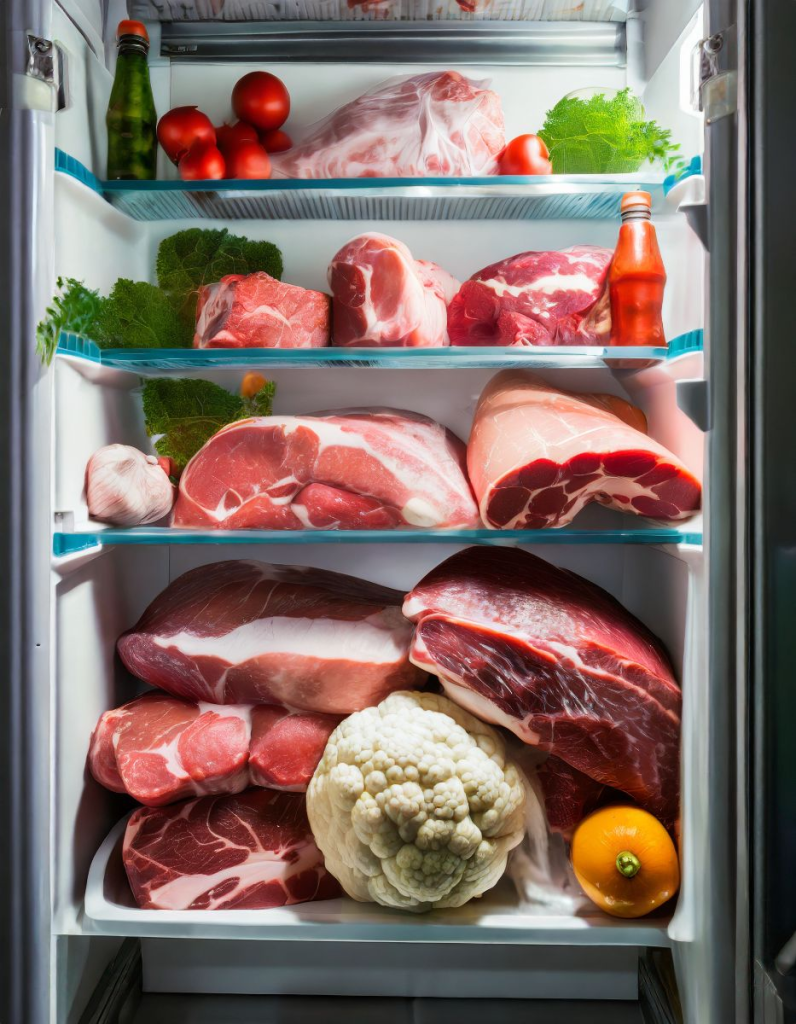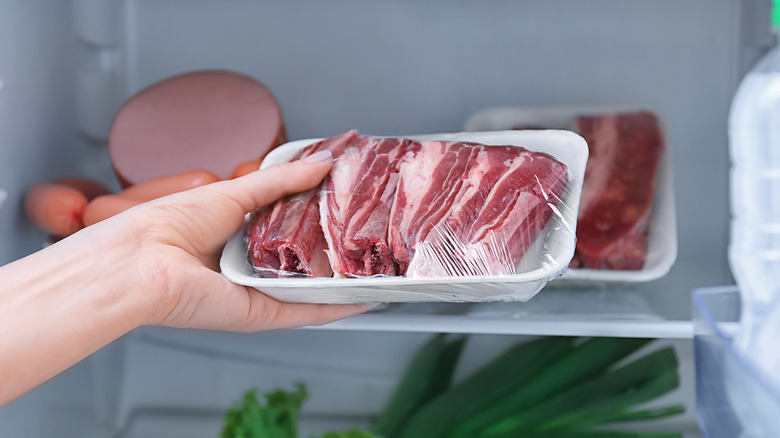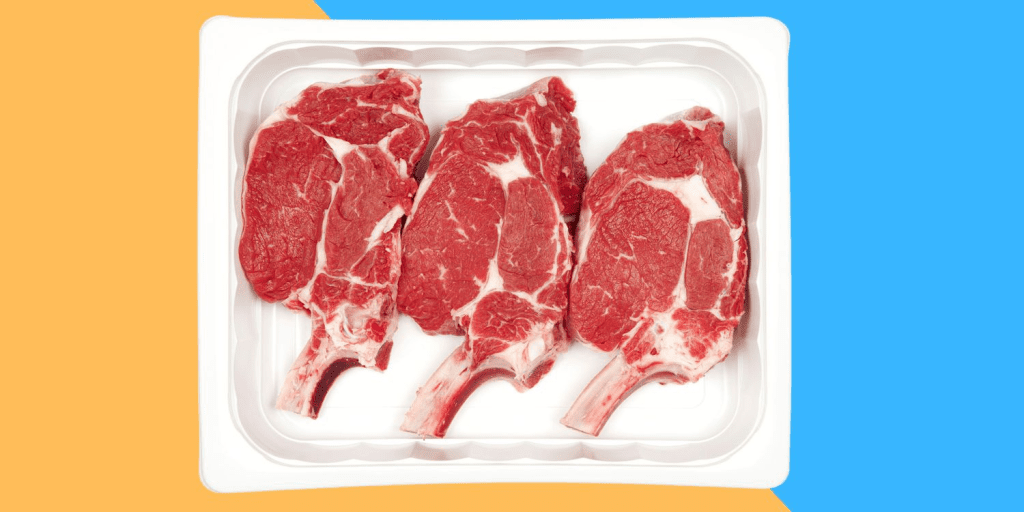Storing raw meat properly in the refrigerator is essential for maintaining its quality and ensuring food safety. With the right techniques, you can minimize food waste, prevent foodborne illnesses, and enjoy meals prepared with fresh ingredients. But how long does raw meat really last in the fridge? Let’s break it down and dive into best practices for safe meat storage.

Understanding the Shelf Life of Raw Meat
The duration raw meat can safely remain in the refrigerator depends on factors like the type of meat, its freshness when purchased, and how consistently your fridge maintains a temperature of 40°F (4°C) or below. Here’s a general guideline:
- Beef, Veal, and Lamb: Raw cuts like steaks, roasts, and chops typically last 3 to 5 days.
- Pork: Similar to beef, raw pork chops and roasts can also be stored for 3 to 5 days.
- Poultry: Chicken and turkey are more delicate, lasting only 1 to 2 days before needing to be cooked or frozen.
- Ground Meat: Products like ground beef, pork, or veal should be used within 1 to 2 days.
By understanding these timelines, you can plan meals effectively and reduce the risk of spoilage.
Factors Influencing Meat Longevity
Several elements impact how long raw meat can last in the fridge. Knowing these can help you make informed decisions:
- Storage Temperature
Meat should always be stored at or below 40°F (4°C). Even slight temperature fluctuations can speed up bacterial growth. Using a refrigerator thermometer ensures your appliance stays in the safe zone. - Packaging
Proper packaging protects meat from air and moisture, both of which can lead to quicker spoilage. Store meat in its original vacuum-sealed packaging or transfer it to airtight containers. For extra protection, wrap it in plastic wrap before placing it in a container. - Initial Quality
Fresher meat lasts longer. Always check the “sell-by” or “use-by” date and inspect for any discoloration, unpleasant odors, or slimy texture when buying meat. - Marination
Acidic ingredients in marinades, like vinegar or citrus juice, can slightly inhibit bacterial growth, potentially extending meat’s fridge life by a day.
Storage Tips for Specific Meat Types
Let’s look at the specific considerations for different types of raw meat:
Beef, Pork, and Lamb
- Store cuts like steaks, chops, and roasts in the coldest part of the fridge, typically near the back.
- If you don’t plan to use the meat within 3 to 5 days, freezing is a better option to preserve its quality.
Poultry
- Raw chicken and turkey are highly perishable due to their susceptibility to harmful bacteria like Salmonella.
- Cook or freeze poultry within 1 to 2 days to prevent spoilage.
- Keep poultry on a tray to catch any juices, avoiding cross-contamination with other foods.
Ground Meat
- Ground meats spoil faster due to their larger surface area and exposure to air.
- Cook or freeze ground beef, pork, or lamb within 1 to 2 days.

Raw Meat Mixtures
- Recipes like meatloaf or meatballs, which combine raw meat with other ingredients, follow the same storage rules as the meat with the shortest shelf life.
Freezing Raw Meat for Extended Storage
When your cooking plans change, freezing raw meat is a great option to extend its shelf life. Most meats retain their quality for several months in the freezer:
- Whole Cuts (Beef, Pork, Lamb): Last up to 12 months.
- Ground Meat: Best used within 3 to 4 months.
- Poultry: Stays fresh for about 9 to 12 months.
Always label packages with the date of freezing to help track storage time. When thawing frozen meat, do so safely in the refrigerator or a bowl of cold water, and never on the countertop.
Signs Your Meat Has Gone Bad
Sometimes, even when following storage guidelines, raw meat can spoil. Use your senses and judgment:
- Smell: A sour or ammonia-like odor indicates spoilage.
- Color: Fresh meat is typically bright red (beef), pink (pork), or light pink (chicken). If it turns gray or green, it’s likely spoiled.
- Texture: A slimy or sticky feel is a sign the meat is no longer safe to eat.
When in doubt, throw it out! Consuming spoiled meat can lead to severe foodborne illnesses.

Practical Tips for Safe Meat Storage
- Always keep raw meat on the lowest shelf of your fridge to prevent juices from dripping onto other foods.
- Check your refrigerator’s temperature regularly to ensure it stays at or below 40°F (4°C).
- Avoid overloading your fridge, as proper airflow is essential for maintaining consistent cooling.
- Use separate cutting boards for raw meat and other ingredients to minimize the risk of cross-contamination.
Conclusion
Knowing how long raw meat lasts in the fridge and following proper storage practices is essential for maintaining both safety and flavor. Beef, pork, and lamb cuts can last up to 5 days, while poultry and ground meat should be used within 1 to 2 days. Storing meat at the correct temperature, using airtight packaging, and practicing safe thawing methods are key to reducing waste and ensuring the meals you prepare are both delicious and safe.
With these tips, you’ll not only avoid spoilage but also maximize the quality of your meat dishes. By taking a proactive approach to raw meat storage, you can enjoy peace of mind while savoring every bite!


